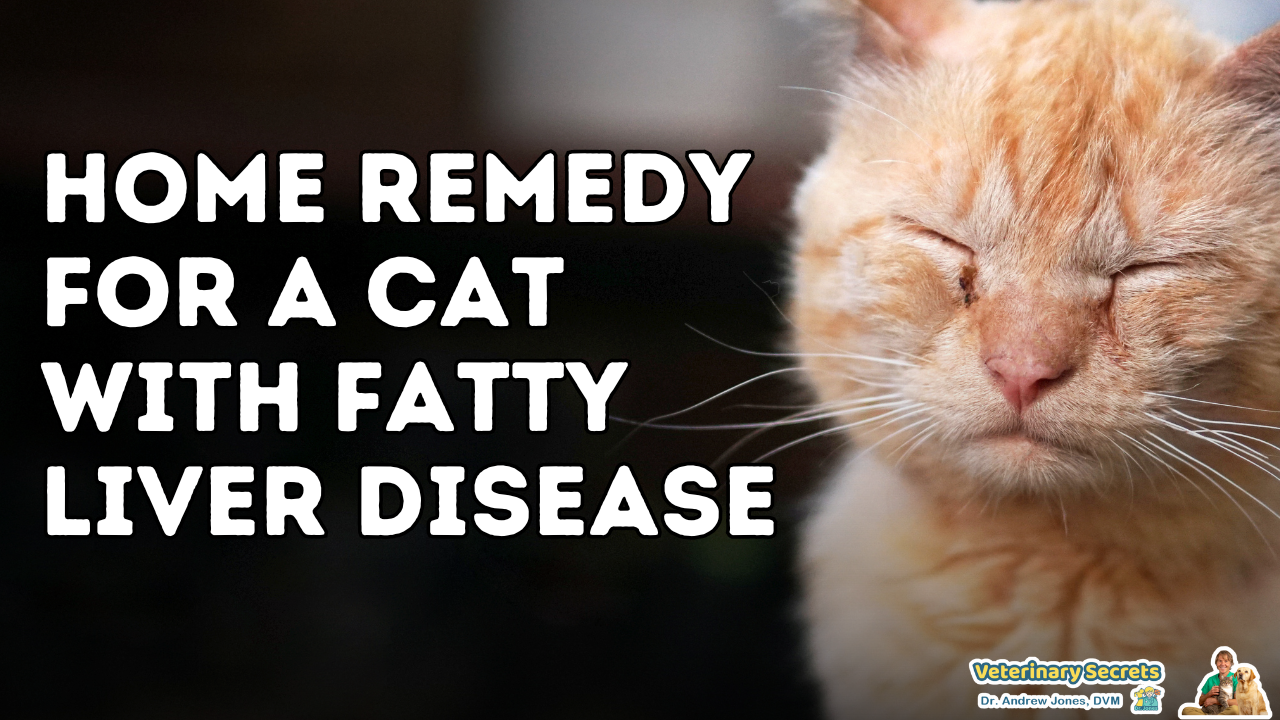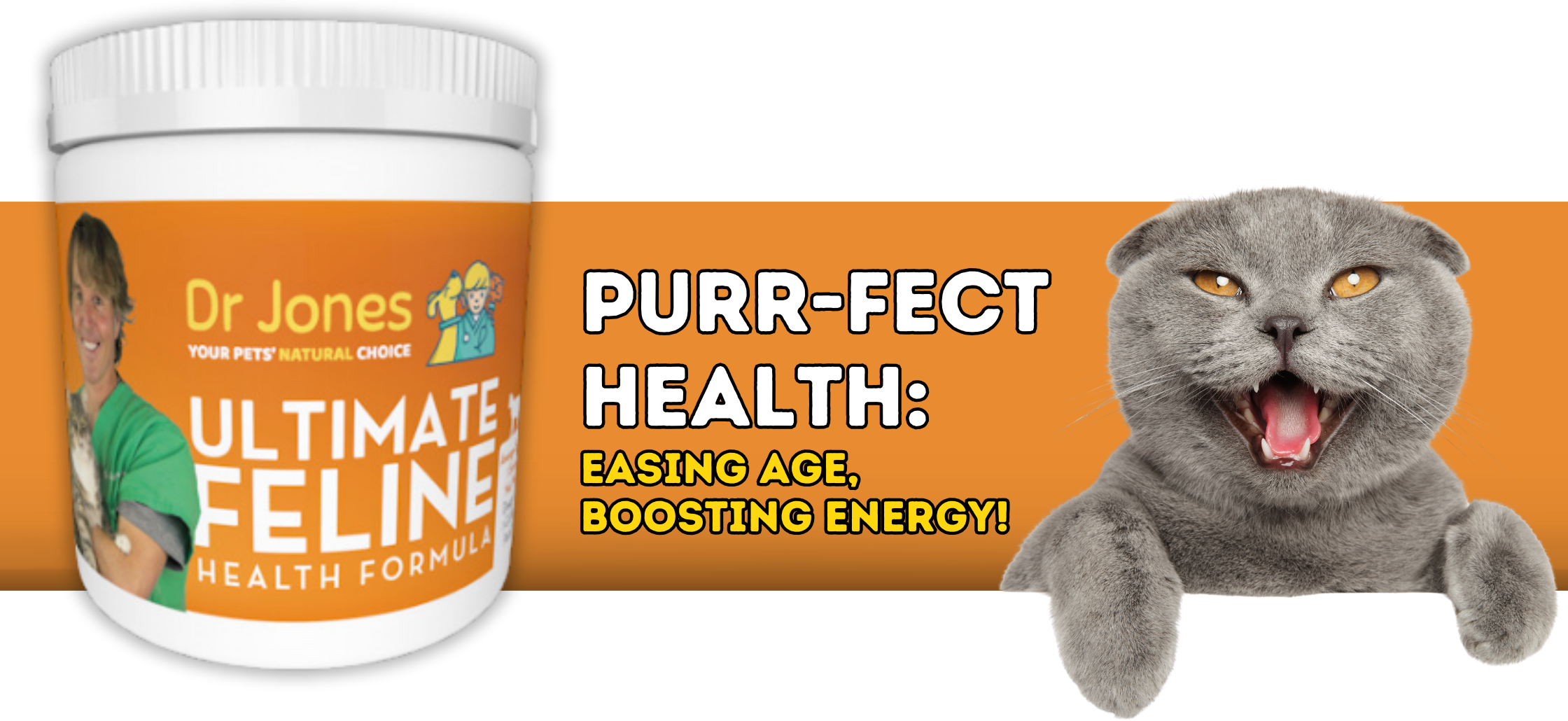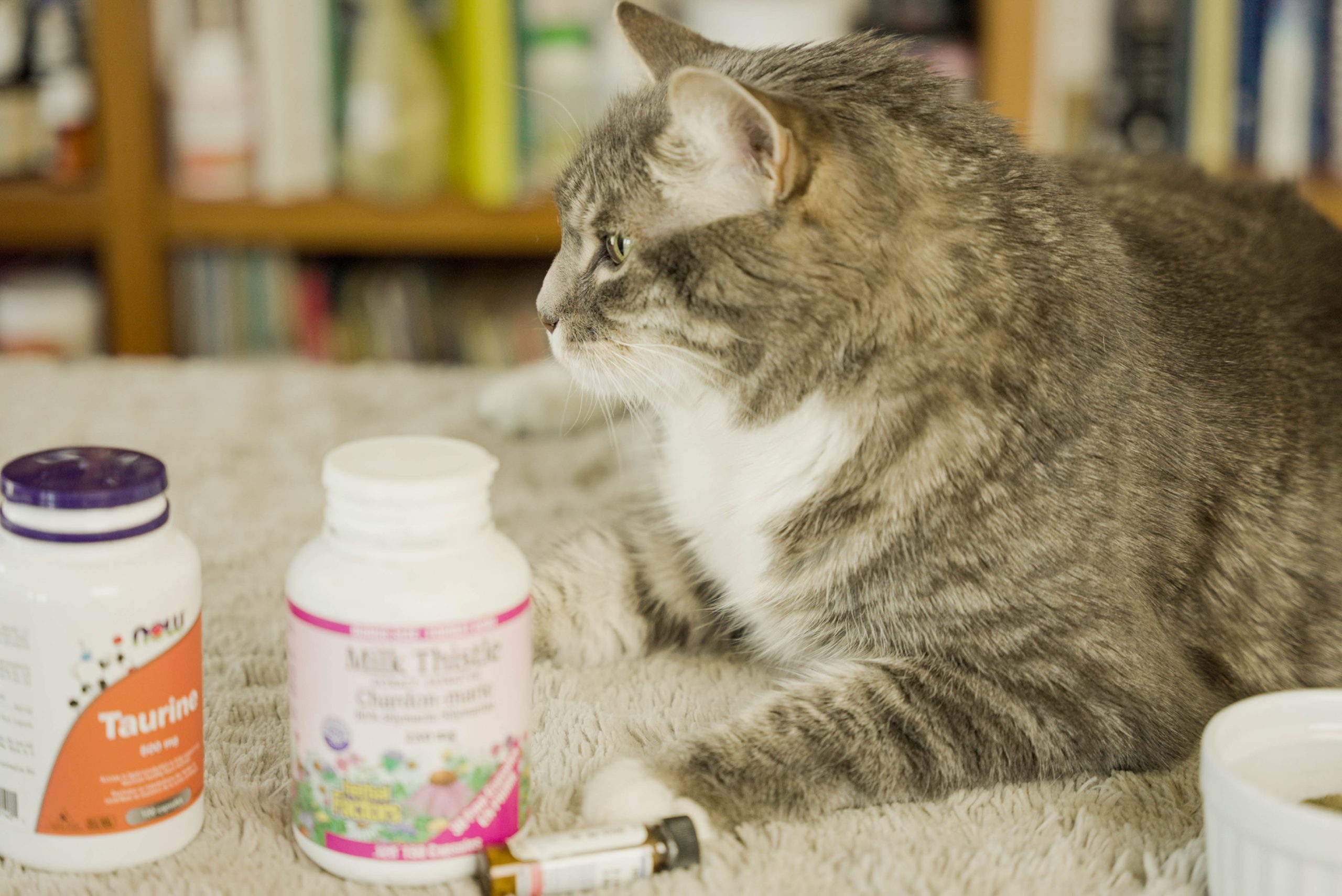Effective Home Remedies for Feline Fatty Liver Disease | Prevention, Symptoms, and Treatments

This potentially fatal liver disease is on the rise, both in people and our cats. Rapid weight loss is causing fat to infiltrate the liver.
The primary way to prevent this is by keeping your cat at an appropriate weight, in part by feeding a high protein, low carbohydrate diet.
One of the fatty liver disease treatments includes an essential amino acid called Taurine, and we have this in our Cat Supplement.
Not only is it healthy, but cats LOVE the taste!
It’s here:
Dr Jones’ ULTIMATE Feline Health Formula


Holistic Approach to Managing Fatty Liver Disease in Cats
Fatty Liver Disease is on the rise and particularly troubling in overweight or obese cats, this silent yet serious liver condition — known medically as hepatic lipidosis — is a wake-up call for all cat parents.
Considering the stealthy nature of the disease, which can go undetected until the liver reaches a truly compromised state, prevention and early intervention are pivotal.
Fatty Liver Primer
Feline hepatic lipidosis is a condition wherein large vacuoles of fat accumulate in liver cells, impairing the organ’s functions. When a cat stops eating and the body turns to fat reserves for energy, excessive fat is mobilized to the liver, eventually overwhelming its capacity, and this is where trouble starts to brew.
Unexplained weight loss is never good
Have your cat evaluated before he becomes especially sick.
The average cat with lipidosis is middle-aged, was at one time obese but has lost at least 25% of its original body weight, has a poor appetite, and may have an obvious upset stomach (38% will have vomiting, diarrhea or constipation).
Cats that are especially weak may have concurrent electrolyte imbalances or vitamin deficiencies from their liver disease.
A fatty liver can develop in as soon as two weeks with an appetite reduction of 50% or more. The so-called fatty liver is one of the most common causes of liver failure in cats and it happens as cats are designed to be carnivores, and should NEVER have fat stores.
That all changed with high carbohydrate dry cat kibble.
Diagnosis of Fatty Liver
- Your Cat is obviously sick and sees the vet.
- Your Cat shows the yellow pigment changes typical of liver disease (70% of cats with lipidosis have jaundice).
- Blood tests show marked ALP increase (a liver enzyme), increased bilirubin, increased bile acids (all measures of liver function)
Why would your cat stop eating in the 1st place
Cornell University looked at 157 cats with lipidosis and looked at what conditions were primary. Here is a summary of what they found:
- 28% had inflammatory bowel disease
- 20% had a second type of liver disease (usually cholangiohepatitis)
- 14% had cancer
- 11% had pancreatitis
- 5% had social problems (new cat, new home, threatening other pet or person at home)
- 4% had some kind of respiratory disease
- 2% were diabetic

Treatment
DIET
The cornerstone of treatment for lipidosis involves aggressive nutritional support.A high protein diet must get into the cat to reverse the metabolic starvation state. If this is done carefully, the recovery rate approaches 90 percent.
Getting the Food In
Generally, by the time a cat has gotten into trouble with hepatic lipidosis, most owners have already tried tempting cats with assorted favorite foods and gotten no results
In practice most cats we treated had to have some type of feeding tube inserted, such as an pharyngostomy tube so you could force feed your cat adequate nutrition and get their liver to heal.
If you are able to force feed your cat, then you can consider trying this with a syringe and liquid food at home before a feeding tube is placed.
The average cat would require 1 can of food/day, we typically used a high protein/moderate fat food such as FARMINA Vet Life Hepatic, ACANA Premium Pate, PURINA VETERINARY DIETS HP Hepatic FELINE.
- The first day, only 1/3 – 1/2 of the day’s calorie requirement should be provided.
- The second day only 2/3 or so of the full calorie requirement should be provided.
- Assisted feeding should be expected to continue four to six weeks.
- Feeding tubes should be cleared with warm water prior to use and cleared again with water afterwards.
- Food must be warmed before administration to a comfortable temperature. Food straight from the refrigerator can induce vomiting.
- Food should be administered fairly slowly. Rapid distention of the stomach can induce vomiting.
MILK THISTLE
Of all the alternative options, milk thistle is the most important solution in helping any ailing liver. The active ingredient is silymarin, and it has protective effects on the liver: improves liver function, and helps treat liver inflammation, toxin-induced liver disease, and end-stage liver failure (cirrhosis). The dose of the dried herb is 100 mg per ten pounds of body weight daily. It is available at most pharmacies. I have had great success using this herb.
S-ADENOSYLMETHIONINE (SAMe)
This is a supplement and potent antioxidant shown to be very effective in people and pets with chronic liver disease. The tablets are available at health food stores; give 100 mg per 10 pounds of body weight daily.
L-CARNITINE
This should be used for any cat with hepatic lipidosis (fatty liver). The average cat dose is 250 mg daily. Cats with hepatic lipidosis may have carnitine deficiency, and by adding it, you’ll help improve your cat’s recovery time.
TAURINE
This amino acid helps bind certain types of toxic bile acids for their removal from the body. It is usually deficient in cats that have not been eating properly and short term (7-10 days) supplementation is a good idea for cats with lipidosis. 100mg/10lbs twice day.
B VITAMINS
These are water-soluble vitamins lost in liver disease. Add a B complex vitamin supplement.The dose is one-fourth adult tablet per ten pounds of body weight daily.
HOMEOPATHIC:CHELIDONIUM MAJUS
Most useful remedy for liver support. Dose: one 30C twice a day. CARDUS MARIANUS. This is produced from milk thistle. Some cats vomit the milk thistle herbal capsules, so this is the option to give. Dose: 30 C twice daily.
P.S. There are many big takeaways from this… .get your cat OFF of kibble and on to a high protein diet. Treat your cat for underlying health conditions such as IBD to decrease the chance of Fatty Liver. Consider adding in Liver supportive nutrients such as antioxidants, and the amino acid Taurine.
P.P.S.About my cat supplement
Antioxidants, Taurine, and ingredients such as Colostrum which may boost metabolic rate decreasing fat stores.
It’s here
